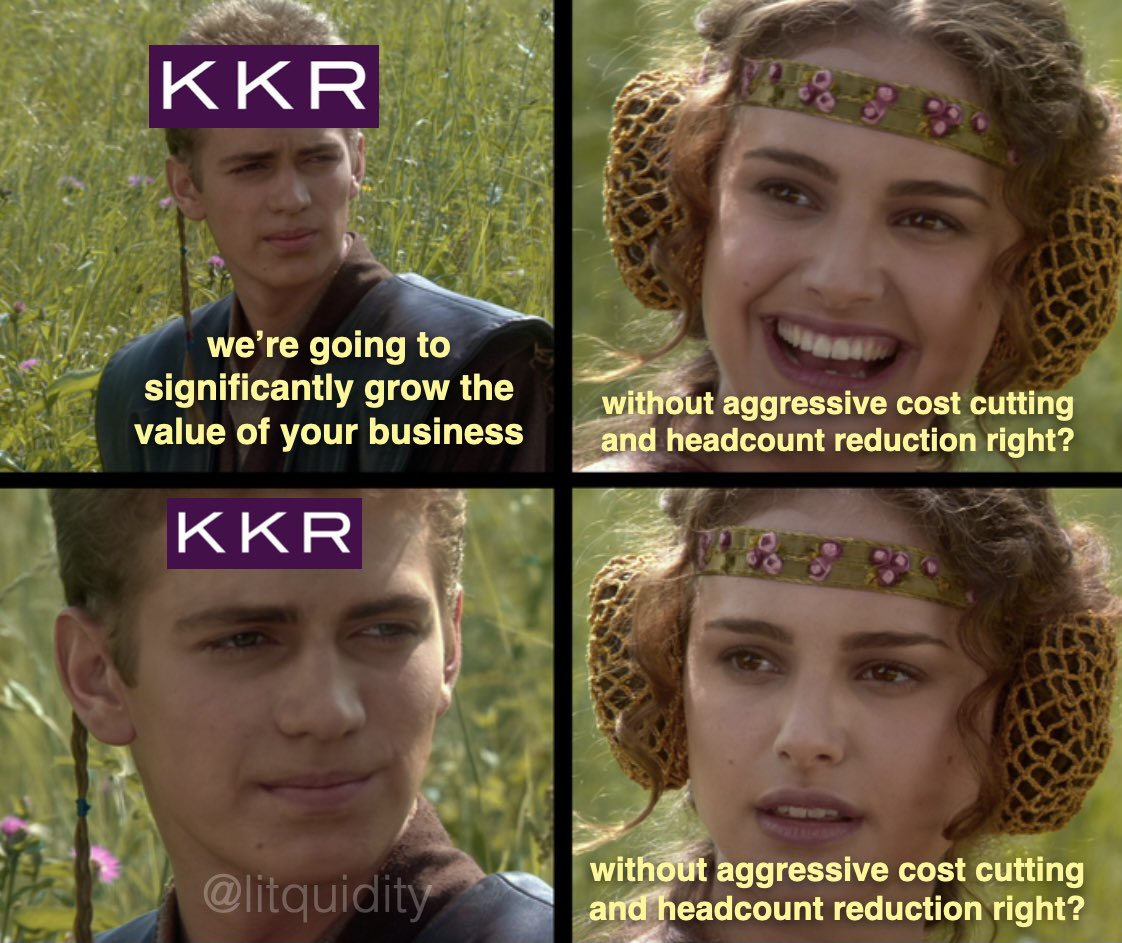There are three parts to this assignment:
- Read essay by Matt Stoller: “It’s Time to Break Up Disney: Part One.” (Nov 5, 2019). For our course focus, this article raises questions around text and context: can issues of ownership/control/labor be separated from critiques of representation, i.e. product. On your rolling Google doc, write brief response notes: What are some key takeaways? What’s the conclusion? What are the implications for DI-HW?

Joel’s 1st draft of a meme on monopoly control of the entertainment industries.
2. Write reflection notes on whatever learning has come from the DI-HW crime board and how it relates to other readings and discussions in the class during the first and second parts of the semester. One to two paragraphs. Some prompts:
- In relation to DI-HW, what, if anything, have you learned? Obviously, we’ve had limited time on the project so there’s not significant depth; with that qualification, what meanings have you begun to make, new questions, thoughts, concerns? In what ways, if any, have your initial directions and questions evolved?
- In what ways do earlier readings and discussions from the first and second parts of the semester inform your thinking? This might include “plastic” vs. “organic” representation, above/below-the-line hierarchies, financialization, what else?

Private equity firms eyeing their next LBO targets. KKR https://www.kkr.com/businesses/private-equity/kkr-portfolio
https://twitter.com/litcapital/status/1405581593071214596
3. Drawing in part from these notes, fashion (2) Adbuster-like flyers that combine image and text to comment on DI-HW topics we’re considering. The process involves brainstorming ways to insert written commentary on an image to catch the attention of readers and challenge them to consider what they’re seeing. One potential outcome is the creation of flyer-like, images to post on walls to spread the critical meanings of the DI-HW crime board installation around campus.
Steps:
- For some examples of this visual communication strategy, survey Adbuster Spoof Ads.
- Digital memes use similar visual logic. Search for memes that somehow express issues you’re addressing. If you find some, it might be purposeful to print them out and add to the installation. Keep a record, post to your Google doc. Assess how they work, how they communicate meaning.
- Find (2) new images related to your topic, and/or work with those already collected, depending upon the strength of the visual image in relation to whatever critical issues/questions you’re raising. These are the images upon which you’ll inscribe commentary text.
- On your rolling Google doc, free write simple captions that somehow offer critique. Use whatever comes to you: irony, minimalism, questions, what else? The goal: draft commentary to visually engage readers and challenge them to consider what they’re seeing.
- Use Google slides to make your flyers. We’ll all use this same slide document: https://docs.google.com/presentation/d/1Wkzj3nbpGyN-ByZoZqUbRGXSnQnzkG2VGxwkMVb9e94/edit?usp=sharing
- When you have a first draft edit you like, download the slide and post on your Google doc.
- Follow this process for the two images you’ve selected.
- When you’re done, download and assess the slide as a pdf.
- Print out copies of each slide and bring to class. As we’ll assess these in part for their visual ability to capture readers via their posting in public places, consider how the visual elements will work as an image on the wall. Think about tonal contrast, light and dark, and size of text.
- When completed, upload these (2) images to your rolling Google doc. This is for the instructor to have a record of what you’ve done.
